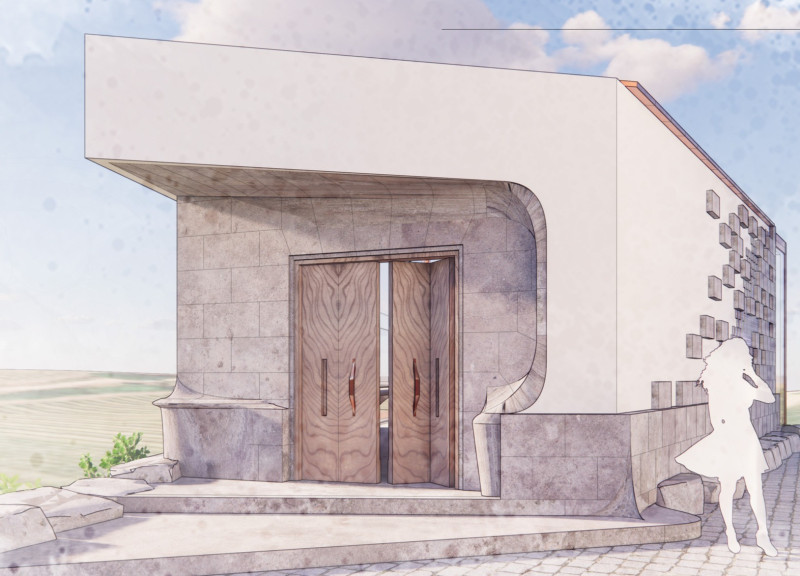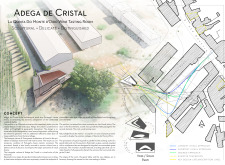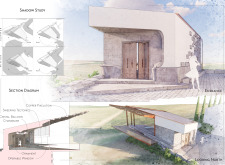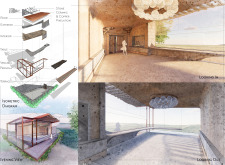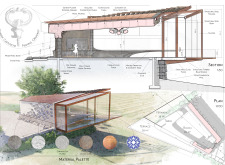5 key facts about this project
Adega de Cristal is a wine tasting room located on the slopes of Monte d'Oiro in Portugal. The design emphasizes a strong connection to its surroundings while providing a unique experience for visitors. The concept centers on an inverted excavation that blends the building into the landscape, allowing it to harmonize with the vineyards that stretch below.
Concept and Spatial Organization
The design carefully arranges visual axes and triangular forms, creating a thoughtful interaction with the terrain. The pavilion is divided into three distinct moments, known as an "Axis Mundi" trinity. The entrance features a solid mass portal that leads into the tasting room made of cork wood. This space is filled with natural light, enhancing its warm atmosphere. A specific area for displaying premier vintages offers a balance of shadow and illumination, creating an inviting environment for enjoying wine.
Architectural Details
The layout leads to a glass veranda complemented by a cantilevered terrace. This feature contributes to the flexibility of the space, accommodating different types of gatherings. The design encourages a connection with the landscape, allowing the pavilion to serve both as an enclosed space and an open venue for enjoying the outdoors. Each element of the plan supports a coherent flow, enriching the visitor experience as they move through the building.
Materiality and Context
Local materials play an important role in the design. Traditional azulejos and native stone reflect the regional architectural style, connecting the building to its cultural landscape. Cork wood is used inside, strengthening the link to the area. These materials serve practical and aesthetic purposes while honoring the heritage of the surroundings, grounding the pavilion in its unique location.
Design Experience
With its balanced proportions and thoughtful details, Adega de Cristal provides a setting that highlights the art of winemaking. The triangular shape mirrors the adjacent vineyards, framing views and encouraging quiet moments of reflection. The combination of light, shadow, and material adds richness to the atmosphere, creating spaces that invite visitors to engage with both the building and the natural beauty around it.


